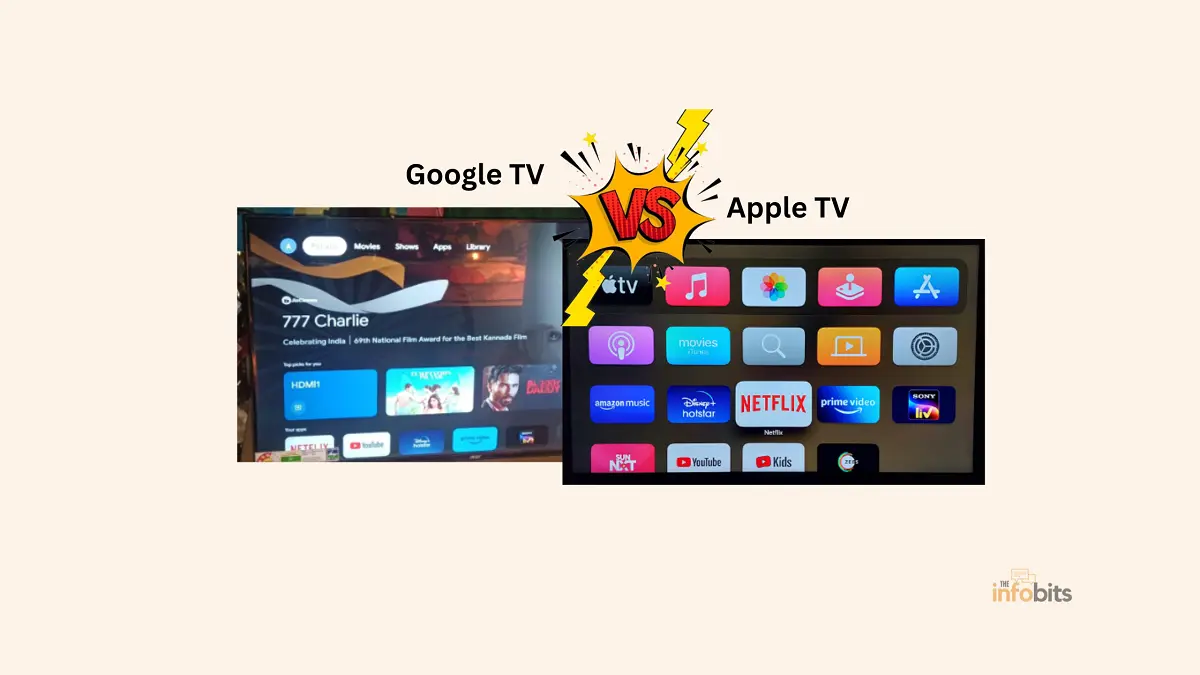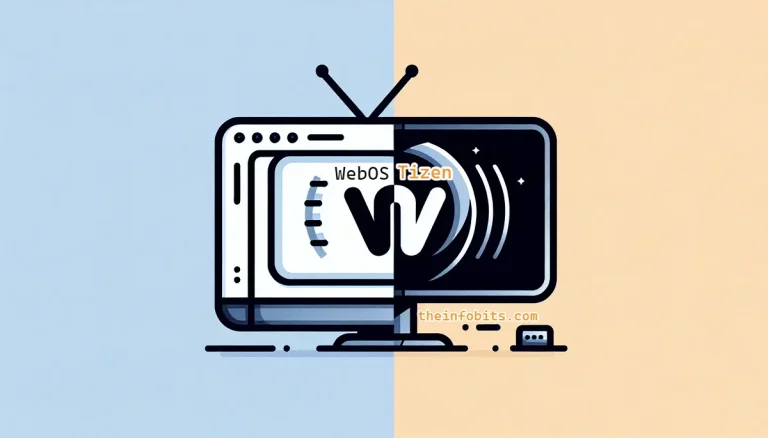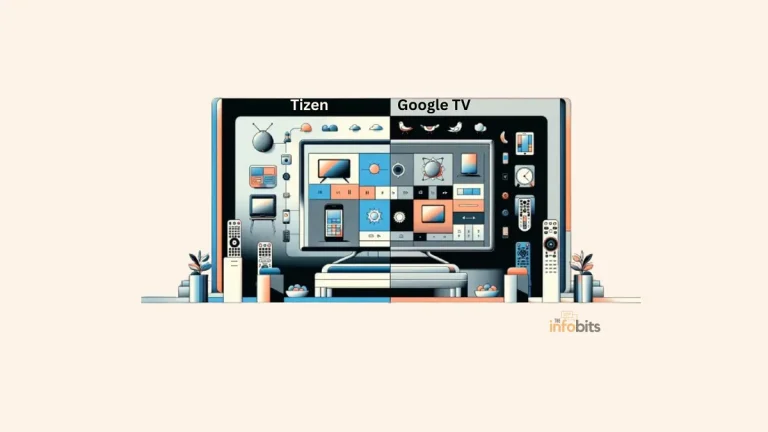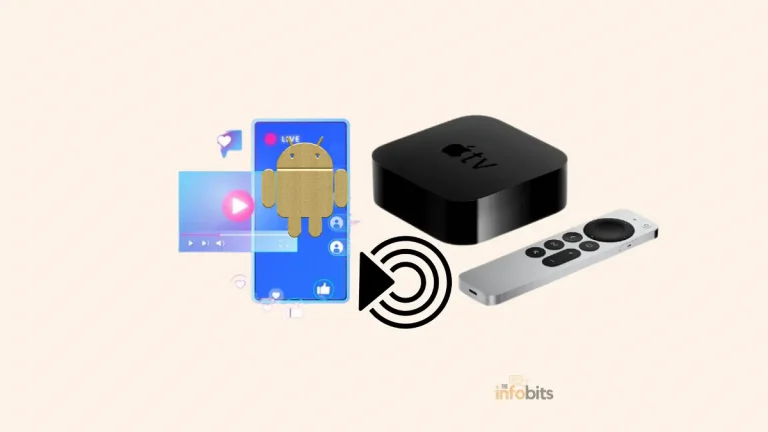Apple TV vs Google TV: Which is right for you?
In the world of streaming platforms, Apple TV and Google TV stand out as smart solutions with a wide selection of content and functionality.
As customers navigate the vast ocean of streaming devices, it is critical to select one that precisely matches their interests and lifestyles.
This in-depth comparison attempts to clarify the rumors surrounding Apple TV vs Google TV, allowing customers to make an informed selection based on performance, features, accessible content, pricing implications, and the overall user experience.
Overview of Apple TV and Google TV
Before we get into the nuances of each platform, it’s vital to understand what distinguishes Apple TV from Google TV in the increasingly congested streaming industry.
Both platforms strive to provide entire entertainment experiences, but they have separate ecosystems and concepts that impact their operation, integration, and appeal to various audiences.
Understanding Apple TV
Apple TV is both a physical device and a platform, providing access to a diverse range of streaming services, including its own Apple TV+.
Apple TV is known for its beautiful appearance, easy interface, and seamless connection with other Apple devices, making it an extension of the brand’s ecosystem.
It is intended to appeal to people who value a premium and consistent experience across all of their Apple devices.
Furthermore, Apple TV has a well-curated app store, the ability to play games through Apple Arcade, and capabilities like AirPlay for casting content from Apple devices.
Its remote control is praised for its simplicity and touchpad navigation, which improves the user experience with the device.
Fundamentals of Google TV
Google TV, formerly known as Android TV, is Google’s smart TV platform, which is integrated into a variety of third-party hardware alternatives and can also be accessed via specific devices such as the Chromecast with Google TV.
It is known for its versatility, tailored suggestions, and connectivity with a wide range of apps and services.
Google TV, powered by the Android ecosystem, makes use of the Google Play Store’s vast assortment of applications and games.
Its integration with Google Assistant for voice search and commands provides a new level of ease. Furthermore, Google TV allows multiple user accounts, providing a more personalized experience for each family member.
Related: Chromecast vs Apple TV: The Battle of the Streaming Devices
Apple TV vs Google TV: Performance Comparison
When picking a streaming device, performance is an important factor to consider. Consumers want a fast, responsive experience that can handle high-definition video without stuttering or latency.
We compare the speed and response times, as well as the visual quality, provided by Apple TV and Google TV.
Speed and Response
The most recent version of Apple TV includes strong technology capable of offering fast app launches and smooth navigation.
The A12 Bionic CPU, included in some of Apple’s most recent devices, guarantees that performance is seldom compromised, even while streaming 4K content or playing graphics-intensive games.
In contrast, the performance of Google TV varies depending on the hardware it is contained in.
Devices such as the Chromecast with Google TV deliver remarkable performance, although certain third-party Google TV devices may not match Apple TV’s consistency and speed owing to varying hardware combinations.
Video Quality
Apple TV supports 4K HDR video, including Dolby Vision and HDR10, which provides vibrant colors and outstanding clarity. Its ability to tune your TV’s settings to maximize video playback yields an unrivaled viewing experience.
Google TV supports 4K HDR streaming with Dolby Vision and HDR10 on supported devices. However, video quality may vary somewhat across various devices.
Nonetheless, it offers a broad selection that will satisfy the majority of people seeking high-quality streaming video.
Features and Benefits
Both Apple TV and Google TV provide a variety of capabilities, but they also have distinct advantages that may persuade customers one way or another.
These features may dramatically improve the user experience, making everyday interactions with the device more fun and easy.
Unique features of Apple TV
Apple TV distinguishes itself for its dedication to providing an ad-free experience on its premium Apple TV+ service, as well as the presence of exclusive content.
It also allows users to buy or rent movies and TV series, a feature that not all platforms provide. The connection with HomeKit enables smart home control directly through the TV interface, which appeals to Apple ecosystem lovers.
The inclusion of Thread networking technology in the most recent versions promises more dependable and secure smart home connections.
Other notable features include Fitness+, which offers a large library of guided workouts, as well as the utilization of Apple AirPlay for seamless multimedia sharing from iOS devices.
Unique features of Google TV
Google TV’s integration with the Google ecosystem provides distinct benefits, such as improved voice search capabilities with Google Assistant and customization tools that customize content suggestions to user preferences.
The platform also has live TV integration for customers who subscribe to services like YouTube TV, which provides a cable-like experience without the need for extra gear.
Another unique feature is Google’s multi-account support, which allows for individualized suggestions and watchlists for various household members.
This function is especially handy for families or shared residences in which members have varying entertainment preferences.
Content and Applications
The amount and diversity of available content are typically the deciding factors for streaming services.
Both Apple TV and Google TV have extensive libraries, but their focus and accessibility vary, which may impact consumer selection depending on their content consumption patterns.
Available content on Apple TV
Apple TV offers access to a wide range of video sources, including popular streaming services such as Netflix, Hulu, and Amazon Prime Video.
Its service, Apple TV+, is fast gaining momentum, thanks to an expanding number of original shows and films. Users may also buy or rent a large range of movies and TV shows through iTunes.
Another advantage is the integration with other platforms via Apple TV Channels, which allows users to subscribe to premium services such as HBO, Showtime, and others directly from the Apple TV app, consolidating payment and viewing into a single interface.
Available content on Google TV
Google TV benefits from its excellent connection with the Google Play Store, which provides access to hundreds of apps and games.
Users can access practically all major streaming services, and the platform’s recommendation algorithm is good at exposing new and fascinating material.
Furthermore, Google TV customers benefit from the platform’s capacity to combine content from many subscriptions into a single, unified experience.
The platform’s adaptability also extends to seamless watching of YouTube and YouTube TV. Because of Google TV’s open environment, users may sideload apps that are not accessible on the Play Store, allowing for more flexibility than Apple TV does natively.
Related: Future-Proofing Your TV: WebOS vs Google TV Comparison Guide
Cost and Value
Cost is unavoidably an important concern when we compare Apple TV vs Google TV. Apple TV and Google TV provide distinct pricing ranges and value propositions.
Assessing what each platform delivers in terms of cost can help customers evaluate which platform gives the most value for their investment.
Pricing of Apple TV
Apple products are often associated with a high price, and the Apple TV is no exception. While more expensive than many alternatives, consumers pay for high-quality hardware, a beautiful appearance, and seamless integration into the Apple ecosystem.
For loyal Apple consumers, the expense is frequently justified by the greater user experience and device consistency.
Furthermore, the purchase of an Apple TV frequently includes a free membership to Apple TV+ for a limited period, adding value to the initial investment.
However, the additional cost may be prohibitive for those searching for a more affordable solution.
Pricing of Google TV
Google TV caters to a wider variety of budgets, with varying price points according to the hardware used.
Devices that work with Google TV, such as the Chromecast, offer a low-cost option to gain access to the platform’s services.
Furthermore, customers may frequently discover offers and discounts on third-party gear that includes Google TV, making it a tempting alternative for cost-conscious consumers.
The platform’s low cost, along with its extensive app selection and personalized experience, provides excellent value for money, particularly for individuals who are not bound to the Apple ecosystem.
User Experience
Personal taste reigns supreme in the realm of user experience. Both Apple TV and Google TV have made significant investments in designing user-friendly interfaces, but each has its own taste and approach to interaction.
The user interface on Apple TV
The Apple TV interface is refined, with an emphasis on a visually rich experience and seamless navigation. Its sleek design allows users to easily discover content and navigate between apps.
The interface with Siri offers excellent voice control, and the remote’s touchpad provides a tactile experience that many users like.
Family sharing on Apple TV is another benefit, allowing up to six family members to share purchases and subscriptions.
Apple TV’s user-centric design is clear: to provide a premium experience that is consistent with the rest of the Apple ecosystem.
The user interface on Google TV
Google TV’s UI is distinguished by its customization and suggestion capabilities. The ‘For You’ option curates content from multiple subscriptions to match users’ viewing preferences.
Given Google Assistant’s extensive knowledge base for search and information requests, the voice control is powerful.
Users may customize the user interface to prioritize their preferred applications or conceal services to which they do not subscribe.
Google TV’s user experience is designed to be adaptive and customizable, catering to a wide audience with varying interests.
Apple TV vs Google TV: Comparison at a Glance
| Parameter | Apple TV | Google TV |
| Overview | Apple’s streaming devices give users access to the Apple TV+ streaming service as well as a variety of third-party apps. | Google’s smart TV platform is intended to improve content discovery and streaming experiences across several providers. |
| Performance | Apple’s hardware and software optimization ensures smooth and consistent performance. | Overall, smooth performance, with occasional deviations dependent on hardware and software integration. |
| Features and Benefits | Integration into the Apple ecosystem, providing easy access to other Apple devices and services like AirPlay and iCloud. Provides unique Apple TV+ original programming. | Streamlined UI with tailored entertainment suggestions, access to several streaming providers, and Google Assistant integration for voice commands and smart home management. |
| Content and Applications | Access to a diverse set of streaming services and applications, including Apple TV+, Netflix, Hulu, and more. | Integration with many streaming services and applications, with a focus on content discovery via tailored recommendations and a “Watchlist” function. |
| Cost and Value | Apple TV hardware costs more than competing streaming devices. Additional expenditures may include Apple TV+ and other streaming service subscriptions. | Google TV devices are available at a variety of pricing points to accommodate different budgets. The platform is free, however, users may be charged to subscribe for streaming services. |
| User Experience | The user interface is smooth and simple, and it incorporates Apple’s unique design elements. Seamless connectivity with Apple devices ensures a consistent user experience. | A user-friendly interface with tailored content suggestions and quick access to streaming services. Voice commands and smart home control improve the user experience thanks to integration with Google Assistant. |
Related: Apple TV vs Roku: A Comprehensive Comparison
Conclusion
Finally, Apple TV and Google TV are two popular platforms that cater to various audiences and purposes.
Apple TV, with its premium look and easy integration with Apple devices, is ideal for individuals who are already committed to the Apple ecosystem and appreciate consistency and quality.
Google TV, on the other hand, provides a more open and configurable experience, with an emphasis on recommendations and Google services, making it appealing to consumers looking for freedom and diversity at a reasonable price.
Finally, the choice between Apple TV and Google TV will be based on which ecosystem best suits your interests, your existing gadgets, and how much you’re willing to invest in your home entertainment experience.
Please share this article with your friends and relatives if you find it useful.
We also ask that you bookmark this page for future reference, as we are constantly updating our articles with new information.
Sign up for our free newsletter as well to receive fresh information immediately in your inbox and keep technically up to date.







